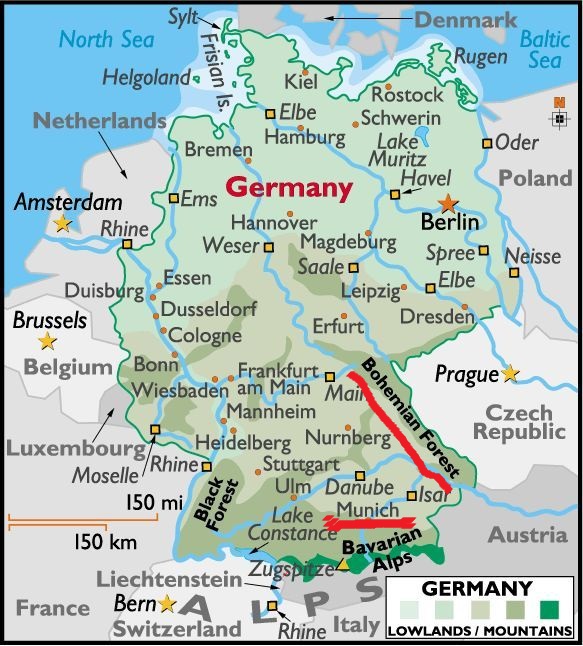Birth



The word Bavarii comes from the Latinized words Baio-warioz = men of Bohemia that was used for the population of the Bohemian Forest, a territory inhabited by the Celtic tribe of Boii during antiquity (Bohemia = boio-hemum = home of the Boii).The region of Bavaria became part of the Roman province of Raetia after 15 BC. Augusta Vindelicorum, today’s neighboring to Munich city of Augsburg, served as the province’s capital.


Bavaria became part of the Ostrogothic Kingdom towards the end of the 5th century until it finally passed to the Kingdom of Francia in the first half of the 6th century. The 6th century was the period when the first sparks of ethnic awareness started to appear in the region. Bavarian ethno-genesis along with the Christianization of the population however were gradual and slow processes that would last well until the end of the 8th century.


After the year 555 the region of Bavaria was ruled by the Frankish noble family of Agilolfings as a largely independent Merovingian vassal state. The city of Regensburg, 124 km north of Munich, served as the state’s capital. The semi-autonomy was abolished with the rise of the Carolingian dynasty after the year 716.


Charlemagne’s grandson Louis the German, younger brother of Emperor Lothair I, made Bavaria his power-center & styled himself as King of Bavaria. With the division of the empire between the brothers in 843, Bavaria was incorporated into the kingdom of East Francia. A few years earlier, in the 8th century, a group of Benedictine monks had established their monastery on a plateau of 520 m (1700 ft.) altitude, 45 km (30 miles) from the Bavarian Alps, near the site where the city of Munich would later develop. It is unsure whether the birth of the city would ever take place if in 1158 Heinrich der Löwe or Henry the Lion, Duke of Saxony (r.1142–1180) & Bavaria (r.1156–1180) hadn’t acted with the usual in those days imperiousness of the feudal lords when their own interest was on the line.



The ambitious duke searched for ways to increase his income & saw a golden opportunity on the salt route followed by traders coming from the salt mines around Salzburg heading north towards Augsburg & further inland. Salt trade was among the most lucrative commercial activities in the Middle Ages, salt being the main means of food conservation. The white gold traders needed to surpass the obstacle of the Isar River which was only possible through a toll bridge near Oberföhring (today part of the city of Munich) controlled by the Bishop of Freising (35 km north of Munich). Henry ordered the construction of a new bridge a few miles upstream from the old bridge, at the site of the present Ludwigsbrücke, adjacent to the Benedictine settlement. In the same time in order to gain the monopoly of the lucrative pathway he simply destroyed the old bridge.


The matter reached Emperor Frederick I Barbarossa who in 1158 basically validated the actions of his cousin to whom he had trusted the Duchy of Bavaria two years earlier. The only condition was that one third of the generated income from the new tolls had to be paid to the keeper of the old bridge, Otto of Freising. Henry (the Lion) immediately granted the Benedictine settlement the right to establish a market and mint its own coins & thus a city was born. The place was initially referred to as zu den München literally meaning to the monks or bei den mönchen gradually becoming just München through the years. To this day the Benedictine monk remains the symbol of the city of Munich.




